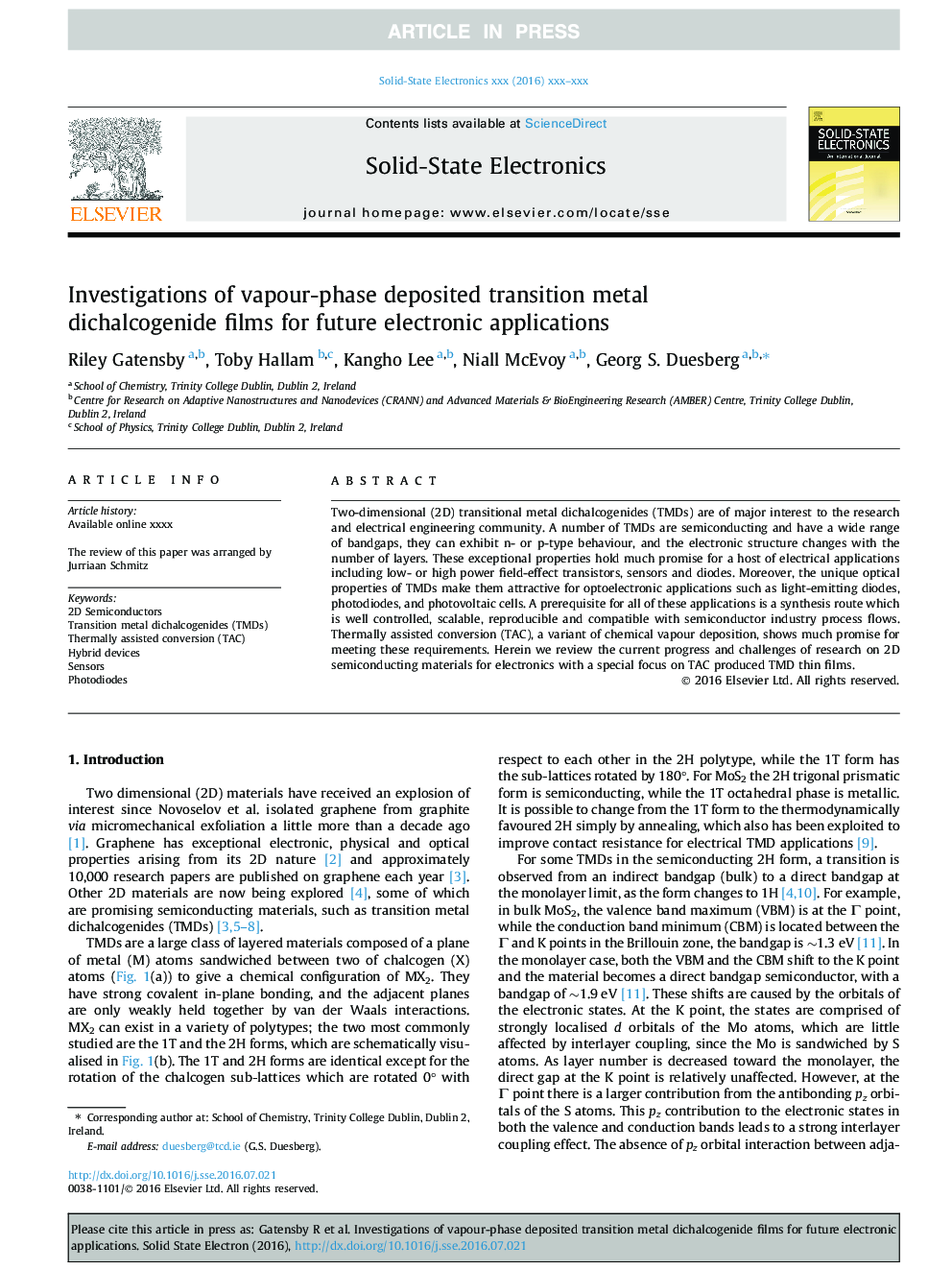| Article ID | Journal | Published Year | Pages | File Type |
|---|---|---|---|---|
| 5010436 | Solid-State Electronics | 2016 | 13 Pages |
Abstract
Two-dimensional (2D) transitional metal dichalcogenides (TMDs) are of major interest to the research and electrical engineering community. A number of TMDs are semiconducting and have a wide range of bandgaps, they can exhibit n- or p-type behaviour, and the electronic structure changes with the number of layers. These exceptional properties hold much promise for a host of electrical applications including low- or high power field-effect transistors, sensors and diodes. Moreover, the unique optical properties of TMDs make them attractive for optoelectronic applications such as light-emitting diodes, photodiodes, and photovoltaic cells. A prerequisite for all of these applications is a synthesis route which is well controlled, scalable, reproducible and compatible with semiconductor industry process flows. Thermally assisted conversion (TAC), a variant of chemical vapour deposition, shows much promise for meeting these requirements. Herein we review the current progress and challenges of research on 2D semiconducting materials for electronics with a special focus on TAC produced TMD thin films.
Related Topics
Physical Sciences and Engineering
Engineering
Electrical and Electronic Engineering
Authors
Riley Gatensby, Toby Hallam, Kangho Lee, Niall McEvoy, Georg S. Duesberg,
